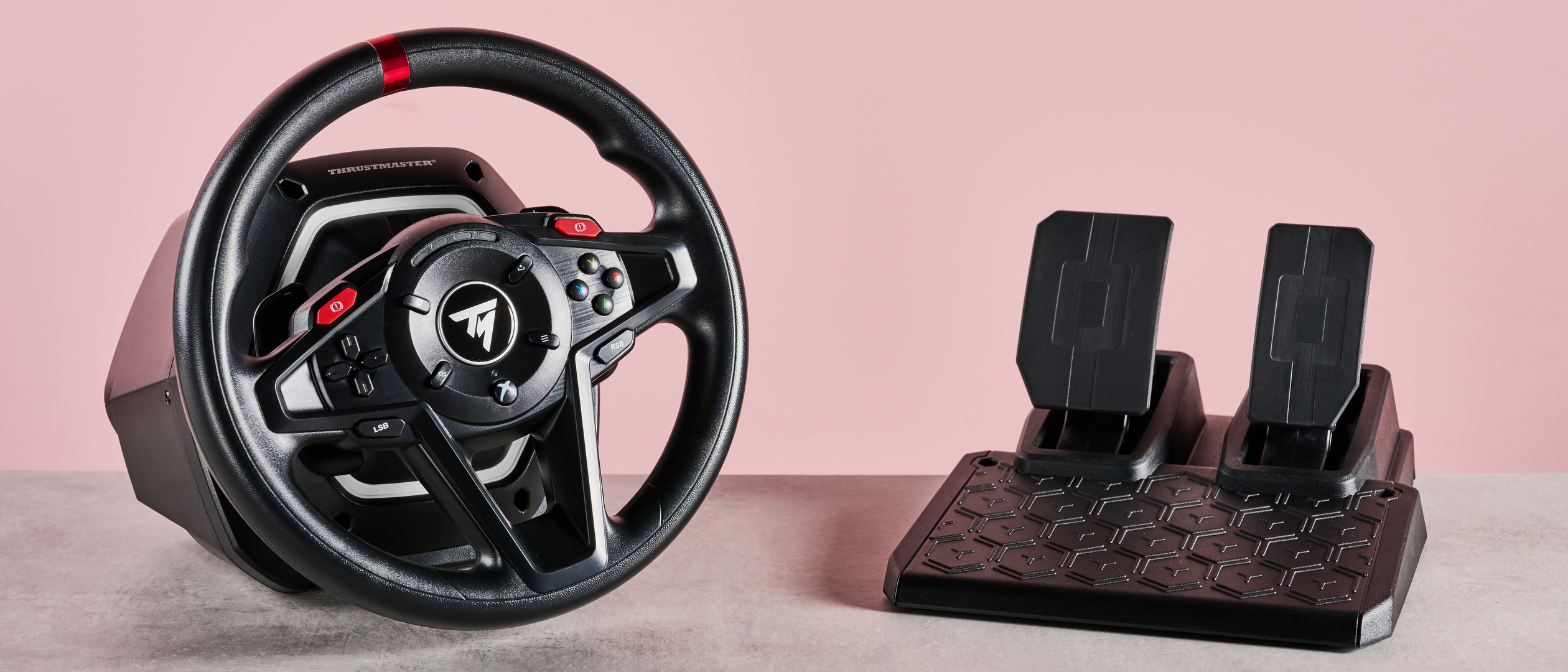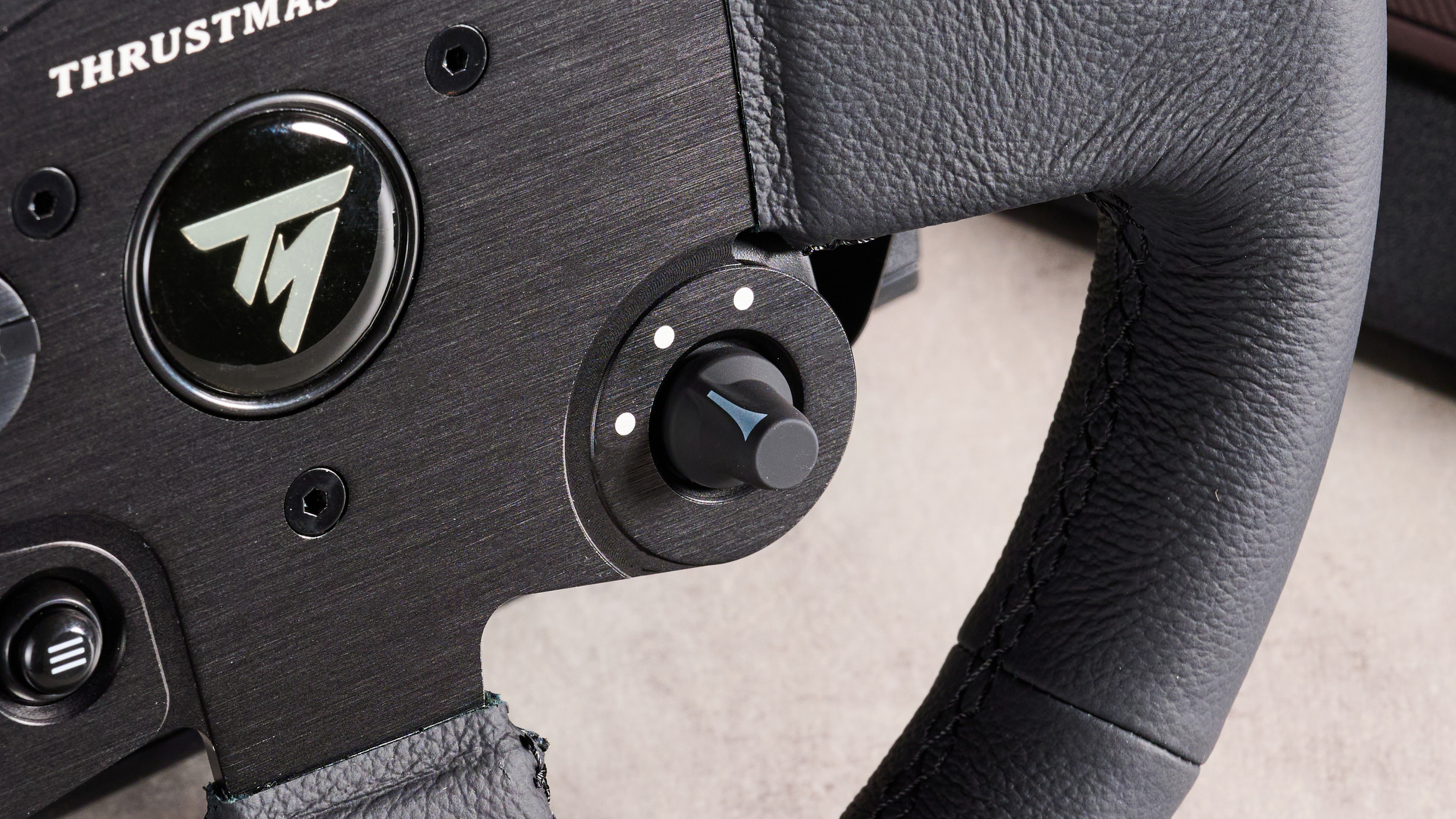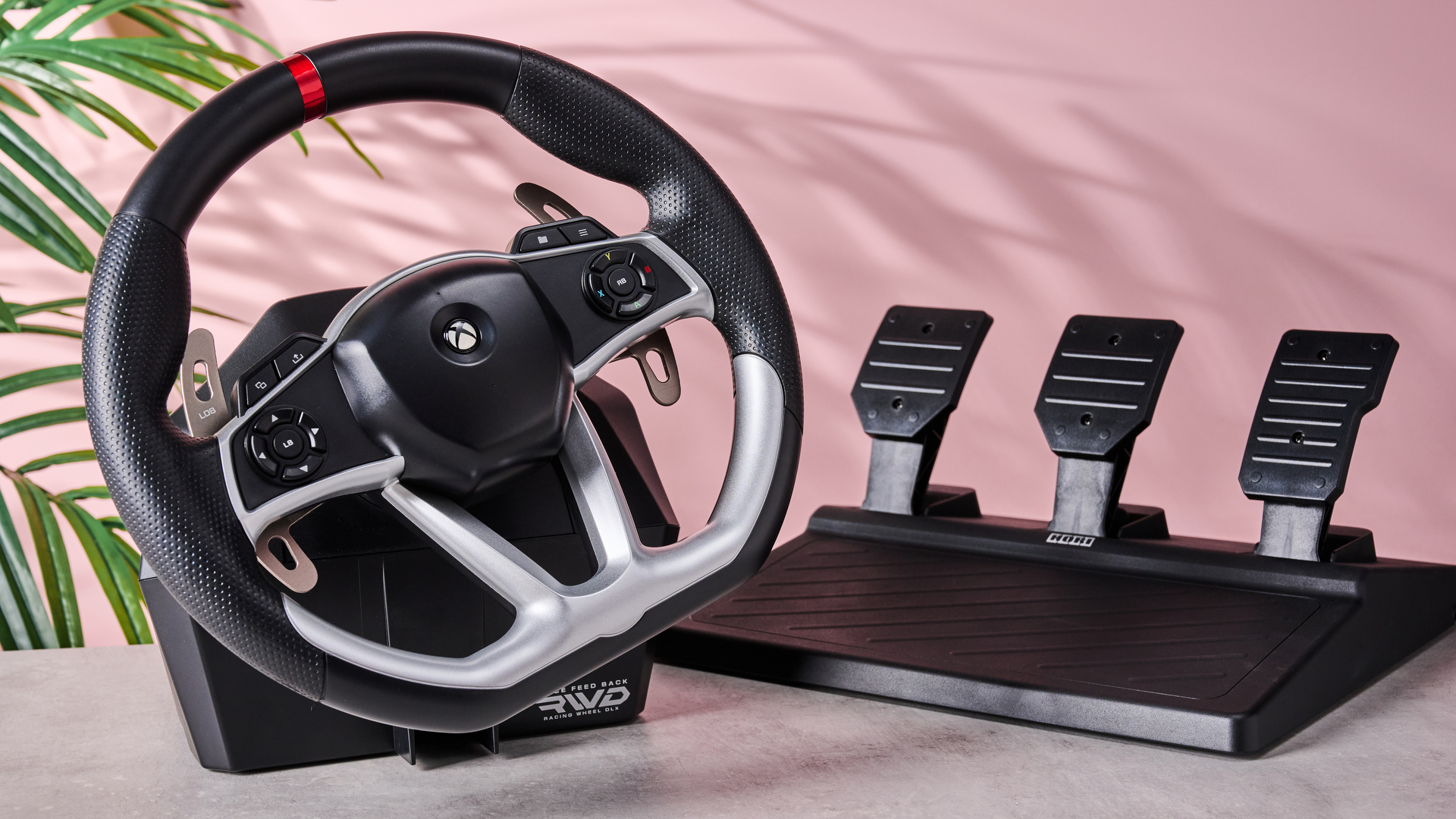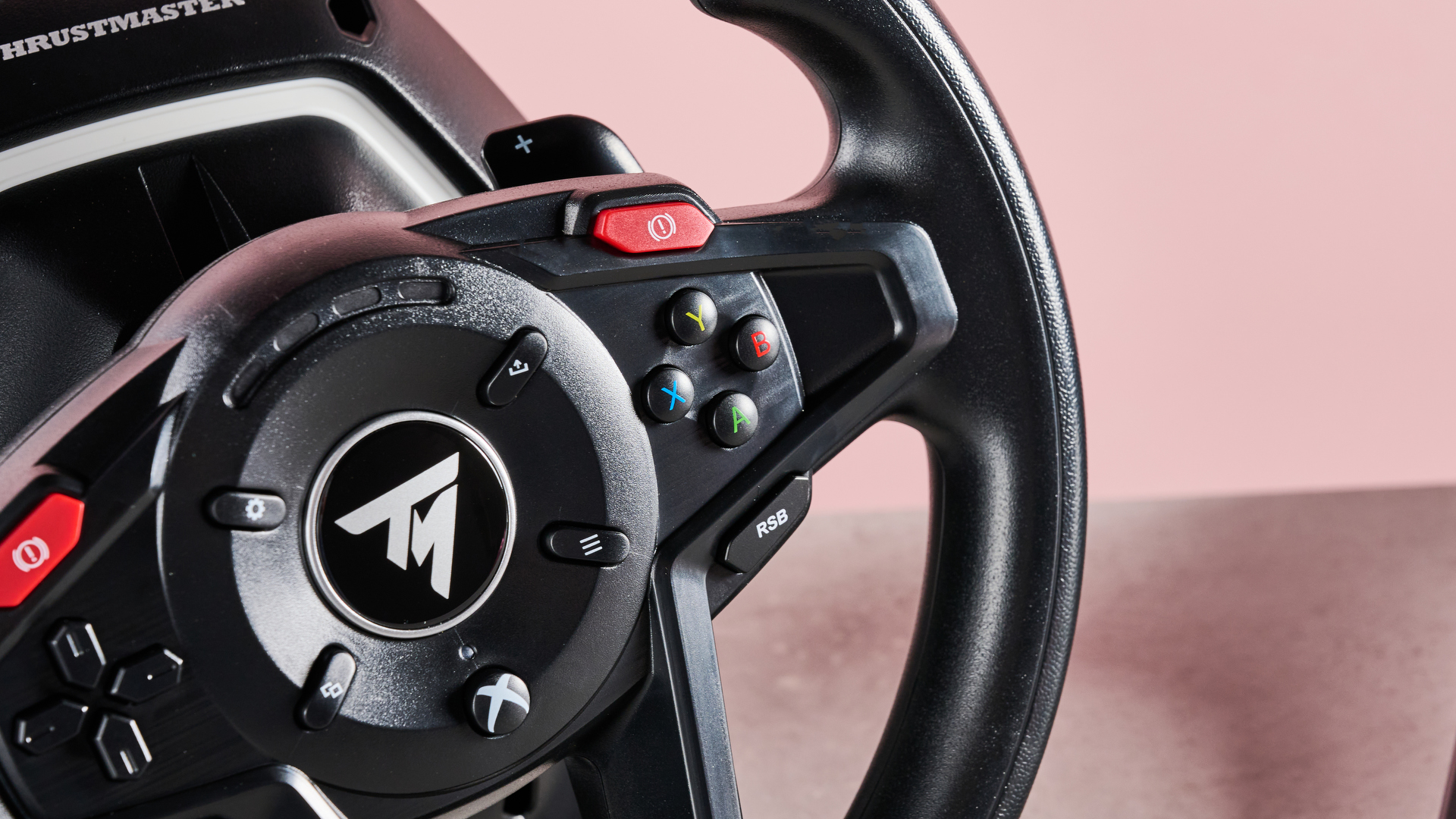I tested three mid-range sim racing wheels – and it turns out the cheapest is the best
Mid-range wheels for every budget – but which offers the best value?

Racing wheels provide greater immersion and control when playing motorsport sims. They’re a must-have for die-hard fans of the genre, although such players are usually in the market for full-on simulator rigs that can run into the thousands. Thankfully, though, there are plenty of affordable models catering to more casual virtual racers, as well as those wishing to dip their toes in or who want a wheel that won’t take up their entire living space.
There are now plenty of reasonably priced examples around, and their numbers continue to grow. Thrustmaster is one of the most prominent wheel vendors in the sector, and is responsible for making some of the best racing wheels, but more and more brands are joining the party.
To that end, I recently tested three racing wheels: the Thrustmaster TX, the Thrustmaster T128, and the Hori Force Feedback Racing Wheel DLX. These wheels cover various price points within the wider mid-range racing wheel bracket – and I’m happy to report, the best of the bunch might just be the cheapest.
Thrustmaster TX

As the most expensive of the three, the TX has a lot to live up to. Thankfully, its features and build quality suggest that indeed it can.
Like many other racing wheels, it comes with a clamping system to fix to your desk, although I found it a little awkward to install when I reviewed it. The central screw can be awkward to tighten, and the whole process isn’t helped by the sheer heft of the wheel base itself; while reassuring, it makes it more difficult to support while attaching the clamp.
However, unlike the other two wheels, the TX has the advantage of being fixable to a racing stand, thanks to the added screw holes underneath the wheel and pedal bases, which will please those after a more refined experience.
The overall build quality of the TX is pretty good, too, being the best of the three. The wheel itself is solid and finished in a perforated, soft-grip material that feels comfortable yet hard-wearing. I also liked the flat yet thick rim, fitting my hands well.
Sign up for breaking news, reviews, opinion, top tech deals, and more.
The TX is also superior in terms of performance. Turns are very smooth, even when making minimal corrections, lacking the prominent notchiness that can plague other racing wheels. It’s also very responsive, which emphasizes the connection to in-game vehicles.
The pedals are similarly tactile, with the brake pedal being a particular highlight in this regard, with the right amount of resistance to provide feedback without being onerous to use repeatedly. The throttle is perhaps a little too light for my liking, but I still found it smooth and accurate enough.
PlayStation and Xbox variants are available, and thankfully, both are compatible with PC as well.
Hori Force Feedback Racing Wheel DLX

True to its price tag, the build quality of the Hori sits somewhere in between the TX and the T128. I was particularly fond of the wheel itself, with its partially soft-grip material and ergonomic curves in the ten-and-two position that accommodated my thumbs well.
I was also pleased with the installation process, with its lightweight body and superior clamp to the TX, making it easy to attach. The buttons impressed me too, with a reliable operation and a layout that makes them easy to use blind.
However, the Hori’s paddles have a usability issue: frequently, my thumbs would get caught between them and the rim when turning about 180 degrees and beyond, which is uncomfortable and could potentially cause harm.
I also experienced inconsistent performance with the Hori. It worked well with Assetto Corsa, offering accurate inputs, but felt at odds with Forza Motorsport, as in-game cars failed to track precisely. The force feedback also left a lot to be desired, kicking in far too suddenly without much finesse or imparting much information, again, feeling disconnected with what was actually happening.
The pedals perform more consistently, and the brake pedal again offers a pleasing amount of resistance and feedback. The throttle is less tactile, but still usable, and includes a clutch pedal, just like the TX, which is nice to see at this price point.
Unlike the other two wheels, the Hori is only compatible with Xbox consoles, which is a shame considering its price tag. The mixed performance is also somewhat of a concern, which means ultimately, the Hori might not be the best value racing wheel you can get.
Thrustmaster T128

The T128 is the cheapest wheel here. It’s similarly priced to the T150, which we think is one of the best PS5 racing wheels for those on a budget, so the brand knows how to make a great racing wheel at a relatively modest price.
Unfortunately, it doesn’t make a particularly auspicious start, as the T128 is perhaps the worst in terms of build quality. The plastics feel cheap in the hand and don’t seem particularly sturdy, owing to their lightness.
Thankfully, there’s nothing outright troubling about its construction, and it suffices for the purposes of light sim racing. Even the paddles feel quite good on the T128, which is usually an area where budget racing wheels can fall down.
Much like the wheel, the pedal set of the T128 is made of cheaper-feeling plastics. They also feel very light to press, but they work well in-game, and I was impressed that the base had enough grip on carpeted surfaces to stop it from sliding away, despite how little it weighs.
The T128 doesn't have a clutch pedal, but this only works in its favor by keeping its cost and size to a minimum. I could be wrong here, but I reckon most gamers after an affordable racing wheel aren't concerned with having a shifter also. This is usually the preserve of serious sim racers, who'll also likely be after one of the best direct drive racing wheels instead, which are generally much costlier than any of the three here.
Steering is light but accurate on the T128, which, coupled with its small diameter, can make it a blast to chuck around when tearing up the virtual tarmac or gravel. The aforementioned lightness of the pedals can be a problem in terms of imparting feedback, especially concerning the brake pedal, but they’re still informative enough to allow for control. I didn’t find the layout cramped, either, which I’ve found with other pedal sets I’ve tried, including the Hori’s.
When you consider its price, the T128 delivers much more than you might expect in terms of performance. What’s more, it’s compatible with Windows as well as console platforms, hence its additional inclusion in our best PC racing wheels guide.
Which one to buy?
The T128 certainly doesn't feel the most premium, especially next to the TX. However, it’s still functional and can withstand the rigors of light sim racing. It might not perform quite so well as the TX, but it’s still very admirable at this price point.
It beats the more expensive Hori, too, since it offers a smoother and more user-friendly performance. What’s more, the Hori is also only compatible with Xbox consoles, whereas the T128 works on multiple platforms.
If your budget stretches to the TX, then that is probably the one to plumb for, since it’s the superior of the three in terms of design and performance. But in terms of sheer value for the money, the T128 is hard to beat, and I think it’s certainly one of the best budget racing wheels you can buy right now.
You might also like...
- Move over ROG Xbox Ally, the real first portable Xbox is here and it’s a gorgeous VR headset
- I test Meta Quest 3 games for a living – here are my 6 favorite deals from Meta's Mega Summer Sale
- Nacon Revolution X Unlimited vs Turtle Beach Stealth Pivot – here’s what I learned testing two of the year’s most interesting Xbox controllers

Lewis Maddison is a Reviews Writer for TechRadar. He previously worked as a Staff Writer for our business section, TechRadar Pro, where he gained experience with productivity-enhancing hardware, ranging from keyboards to standing desks. His area of expertise lies in computer peripherals and audio hardware, having spent over a decade exploring the murky depths of both PC building and music production. He also revels in picking up on the finest details and niggles that ultimately make a big difference to the user experience.
You must confirm your public display name before commenting
Please logout and then login again, you will then be prompted to enter your display name.